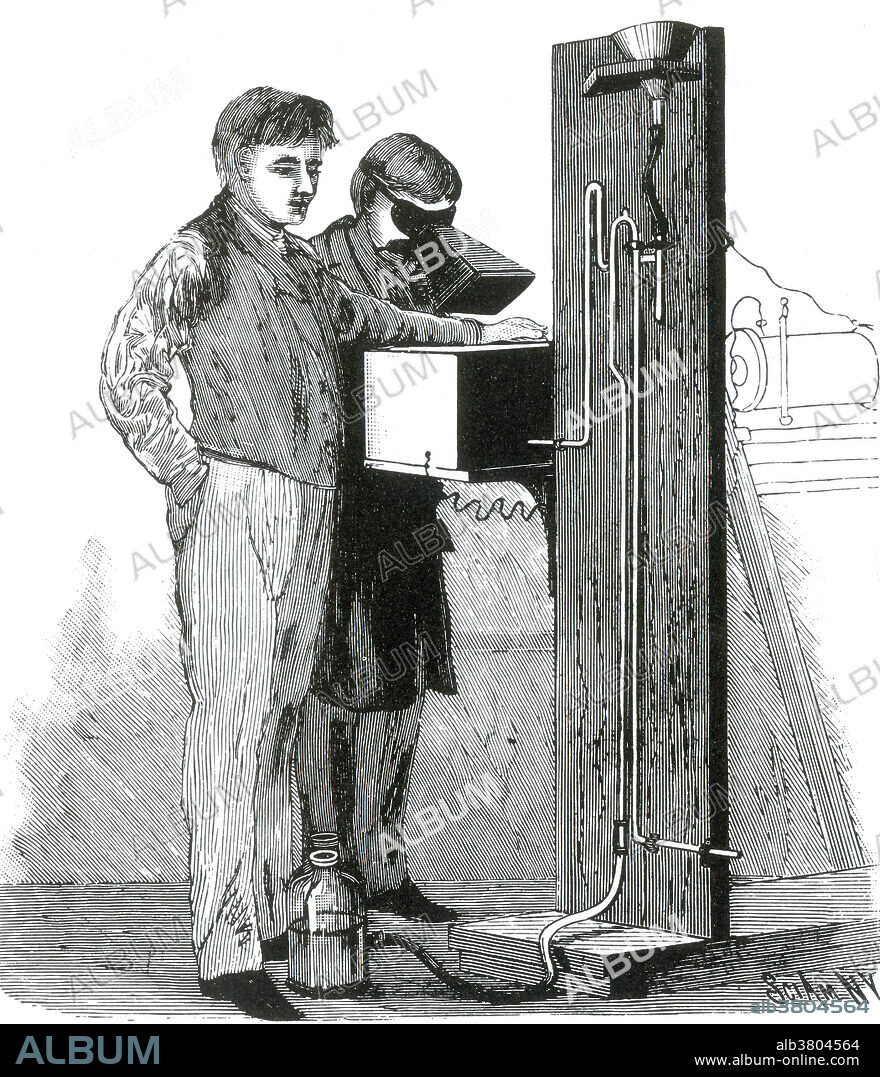alb3804564
Edison's X-Ray Apparatus, 1896

|
Añadir a otro lightbox |
|
Añadir a otro lightbox |



¿Ya tienes cuenta? Iniciar sesión
¿No tienes cuenta? Regístrate
Compra esta imagen

Título:
Edison's X-Ray Apparatus, 1896
Descripción:
Ver traducción automática
In 1895, Thomas Edison investigated materials' ability to fluoresce when exposed to X-rays, and found that calcium tungstate was the most effective substance. In 1896, the fluoroscope he developed became the standard for medical X-ray examinations. He dropped X-ray research around 1903, even before the death of Clarence Madison Dally, one of his glassblowers. Dally had a habit of testing X-ray tubes on his hands, and acquired a cancer in them so tenacious that both arms were amputated in a futile attempt to save his life.
Crédito:
Album / Science Source
Autorizaciones:
Modelo: No - Propiedad: No
¿Preguntas relacionadas con los derechos?
¿Preguntas relacionadas con los derechos?
Tamaño imagen:
3350 x 3900 px | 37.4 MB
Tamaño impresión:
28.4 x 33.0 cm | 11.2 x 13.0 in (300 dpi)
Palabras clave:
1896 • ARTE • DIBUJO • EQUIS • FLUOROSCOPIA • HERRAMIENTA • HISTORIA • HISTORICO • ILUSTRACION • IMAGENES • INSTRUMENTO • INVENCION • LIBRO • MAQUINA • MEDICINAL • OBRA DE ARTE • RADIOGRAFIA • RADIOGRAMA • RADIOLOGIA • RAYA • RAYOS X • SIGLO XIX • SIGLO • TECNOLOGÍA • TECNOLÓGICA • THOMAS • TOMOGRAFÍA • X
 Pinterest
Pinterest Twitter
Twitter Facebook
Facebook Copiar enlace
Copiar enlace Email
Email
